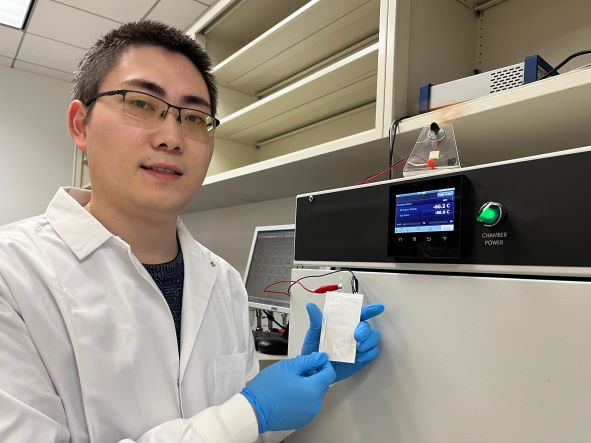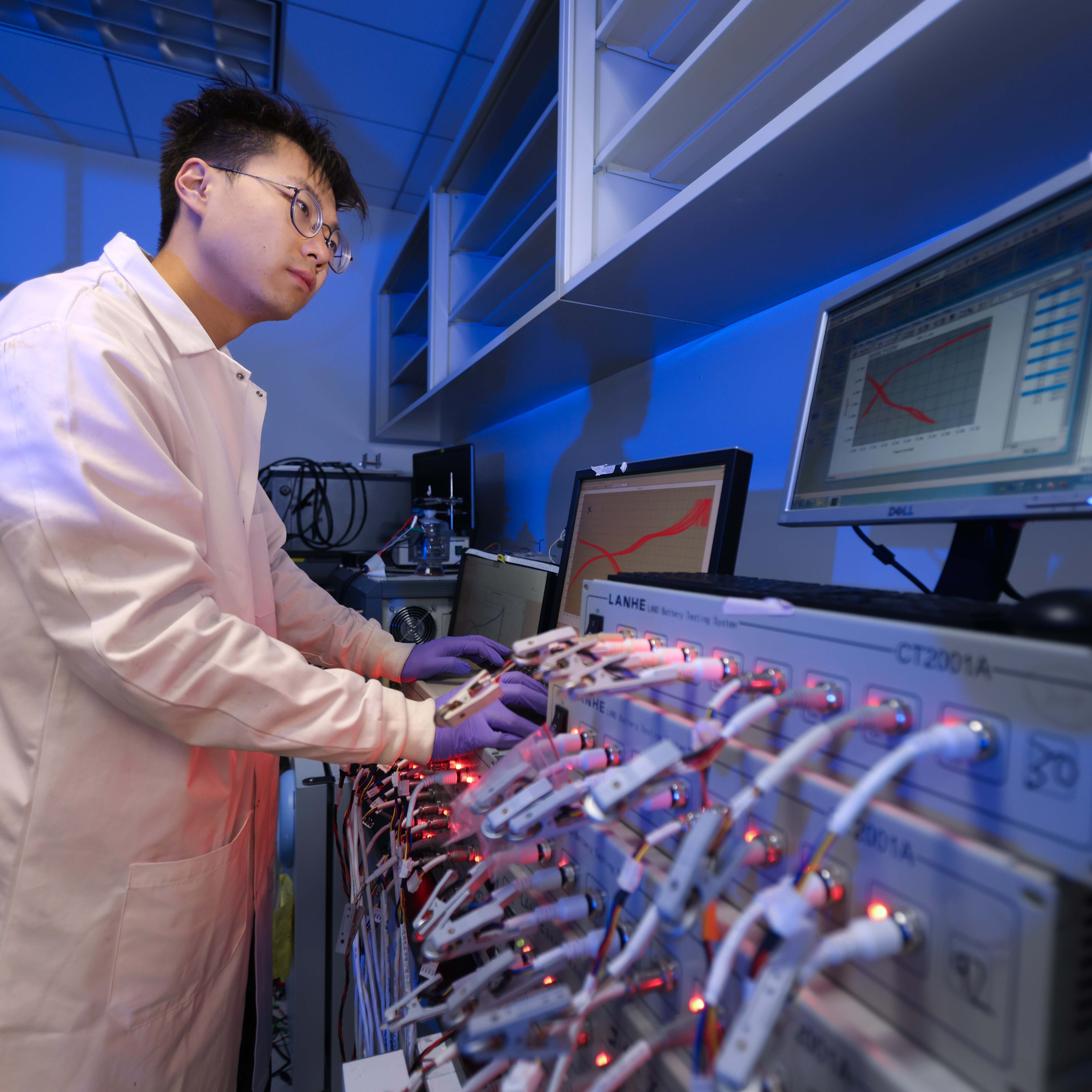News Story
New Electrolyte Design Could be the Answer for Safer Rechargeable Batteries even in Extreme Cold

Imagine driving a next-generation electric vehicle with a high energy storage capacity and fast charging system under extremely low-temperature conditions or using a smartphone that reliably works during extreme freezing temperatures. Such an occasion would mean driving a generation of electric vehicles not powered by commercial lithium-ion batteries, which are known to experience significant capacity loss or even become completely inoperable in cold weather conditions.
These advances are on the horizon and could happen because of the increasing attention battery technology is gaining in electrolytes chemistry after several decades of slow development. One such major development is a study by Prof. Chunsheng Wang and his team in the Department of Chemical and Biomolecular Engineering (CHBE) and partners. They have developed new electrolytes for safer and greater storage capacity batteries that can operate at extreme temperatures.
Prof. Chunsheng Wang and a group of researchers described in the journal, Nature a new class of soft solvating electrolytes that allows for fast recharging and operation of a lithium battery under a wide temperature variation.
“Optimal performance under extreme conditions requires that batteries not only function under a wide range of temperatures, but they should also be able to charge quickly, withstand higher voltages, and be safe/non-flammable,” said Dr. Jijian Xu, the first author of the team’s Nature paper and a visiting Assistant Research Scientist in the Department of Chemical and Biomolecular Engineering at UMD.
To understand this electrolyte design configuration for batteries under extreme operating conditions, the researchers identified a family of soft solvating electrolytes that enables 4.5 V NMC811||graphite cells. The result showed charging/discharging over a wide temperature range of ±60 o C, covering a fast charging time of only 15 -minutes.
“Commercial carbonate-based electrolytes will be frozen at a low temperature of around -30 o C, resulting in battery failure,” said Xu. “Our finding provides a practical drop-in solution for the Li-ion batteries towards next-generation EVs to meet the energy density, fast-charging, wide temperature operation, and safety requirements.”
In developing the design, the researchers identified solvents with a relatively low donor number (less than 10) and high dielectric constant (greater than 5) values, which minimizes the Li + –solvent binding energy while still dissociating the lithium salt.
Supplementing the electrolyte with a component with a high reduction potential enables the formation of similar lithium fluoride-rich interphases on both anodes and cathodes. It facilitates similar lithiation/delithiation kinetics on both the anode and cathode. Molecular modelling performed by Oleg Borodin’s team assisted in identifying the soft-solvating molecules and co-solvents that minimized both bulk and interfacial resistance resulting in faster charge/discharge times.
This thermodynamic (capacity) and kinetics (impedance) match for anodes and cathodes give lithium nickel manganese cobalt oxide (NMC811) ||graphite batteries with the capabilities of fast charging and wide service temperature range without Li plating.
The new electrolyte design configuration by Prof. Chunsheng Wang and his team is a significant turnaround on lithium-ion batteries, widely used in various products ranging from electric vehicles to portable electronics. Their study could answer the operation temperature limitation of today’s lithium-ion batteries and address the safety problem. Liquid electrolytes are known to have a major shortcoming in lithium-ion batteries. The liquids in lithium-ion batteries can explode into flames under extreme conditions or if a short circuit of some sort occurs. In contrast, one of the benefits of the proposed electrolyte design technology is that electrolyte is not flammable, and the batteries are less unlikely to catch fire under the abuse of extreme conditions, as is the case with lithium-ion batteries in a range of products.
There are other advantages of the electrolyte design technology besides wide operation temperature range and safety. Domestic interest in affordable energy aligns with the worldwide increase in concern over climate change and the world’s most vulnerable populations being impacted by it. As a result, the developed lithium-ion batteries could be significant in helping mitigate the problem of climate change.
This multi-institutional study included researchers from the U.S. DEVCOM Army Research Laboratory, Rutgers, The State University of New Jersey, and Brookhaven National Laboratory.
For additional information, see Xu, J., Zhang, J., Pollard, T.P. et al. Electrolyte design for Li-ion batteries under extreme operating conditions. Nature (2023). https://doi.org/10.1038/s41586-022-05627-8
Published February 10, 2023









